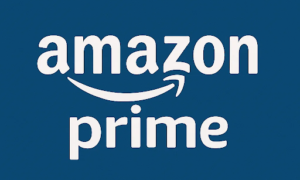Purpose of business: Law is to justice, medicine is to health, and business is to the economy. At an individual business level, its purpose is to offer value-added goods and services to consumers who are willing to buy them at a competitive price. A profit margin is generated after the revenue has funded the costs, interests, and taxes that incur for the period.
A consistent effort of business heads is to reduce costs and increase margins. There are direct and indirect spending requirements for a business. Broadly the categorization for direct and indirect spending is highly dependent on the nature of the business. Usually, the purchase of raw materials for a manufacturing business and products for retail entities are treated as a direct spend supported by category management procurement.
What is category management?
Strategic approach
In business, many decisions need to be addressed from a vantage point, and the ensuing benefits that are offered will yield long-term benefits. Category management is a strategic approach that helps in bundling products with similar features under the same umbrella.
Aim
Through organization in groups, a business is to analyze consumer needs and place procurement efficiencies by sealing all predictable gaps and adopting a seamless workflow model. Category management steers businesses from unhealthy spending that can result in price escalations.
Benefits of category management
-
Critical for procurement
Procurement is vital for the supply chain function of an organization. Any delay or non-availability of raw materials or products will escalate the costs and is a loss in form opportunity costs.
Consumers don’t have time to wait, and they tend to move over to competition when a business is failing to meet its demands. The cost of customer acquisition that was expensed in the past will become futile, and new customer acquisitions will become a challenge till supply issues are resolved. With category management, business intelligence tools will report both the requirements from consumer ends, gauge the availability of input purchases and seal the deals in a manner that avoids big gaps.
-
Better vendor management
Category management allows the business scope to build better relations with the vendors through positive engagement activities and tactical business propositions. The advantage of category management is long-term, and it is spread across end-to-end processes. It helps in securing future procurement critical to the workflow at attractive negotiations. Since the costs are spread across the category a vendor is convinced about future consistent orders and is willing to participate with the terms of the entity.
-
Reduced costs
When vendors are not under a constant threat that their buyers will switch to a cheaper source and they will be the primary vendors for a client’s future projects, they are willing to offer the best deals. These deals are lucrative and positively impact the overall operations costs. A business that treats all the stakeholders equivocally stands to gain with higher projected revenues and positive cash flows.
-
Focussed inventories
The inventory cycle should be balanced for any company where the refilling and supply have to match the future demand without creating any blockages of old inventory. Category management helps in clearing inventories without increasing their holding period beyond the industry standard. It also helps in maintaining the supply through timely procurement without any hurdles.
-
Improves consumer experience
A consumer is attracted through effective advertising that has cost the entity and involves customer acquisition costs. After the initial interest of the consumer is piqued they will feel disappointed if the brand fails to deliver results.
For instance, a trending handbag available at a competitive price is the lead product of the week for retail stores. After walking into a store, several consumers are disheartened as the brand failed to analyze the reach and success of the advertising and the number of bags was less than the estimated demand. To save face, the store manager takes the details of the consumers and promises them a refill within the next three days. Now, only category managers can deftly handle the situation and procure enough bags to be sold in the next three days.
In this manner, the consumer experience is enhanced by following up on the promise to supply a hot-selling product that is in demand. It translated into effective sales and brand promotion as well.
-
Utilizing opportunities to reduce risks
Category managers use productivity and business intelligence tools that help in harnessing the information in time to identify opportunities for saving or minimizing costs. They use key insights from dashboards to constantly find deals that can be profitable for the brand. A consistent role played through category management helps in maintaining a fluid supply chain. It reduces vendor-initiated risks such as salting bad products in batches or routing procurement to new clients by undermining the terms of your organization.
-
Builds collaborations
With the rise in digital tools and automation of business processes, category managers are finding it easier to build and maintain relationships both from the supply and buyer sides.
With an increased focus on building collaboration that aids to improve supplier management processes and retail consumer experience, digital applications for category management are adopted by futuristic businesses that are embracing multifold gains through automation.
Continuous engagement is difficult if it has to be conducted manually. But with automation and productivity tools, continuity in informing the suppliers about future requirements and engaging the consumers through enticing offers through emails and sms alerts has become the order of the day. All these efforts are automated with timely human intervention to maintain connectivity with the stakeholders.
Conclusion:
Category management is not to be mistaken for project procurement or strategic sourcing, both of which are short-term purpose-oriented methods, unlike holistic ones. With effective category management businesses can avoid pitfalls as they are spotted in advance, and a corrective course of action is taken. Category management helps in maintaining the complete cycle of both supply and demand fulfillment within acceptable time and price ranges to create value for the business and help in its scale.



































